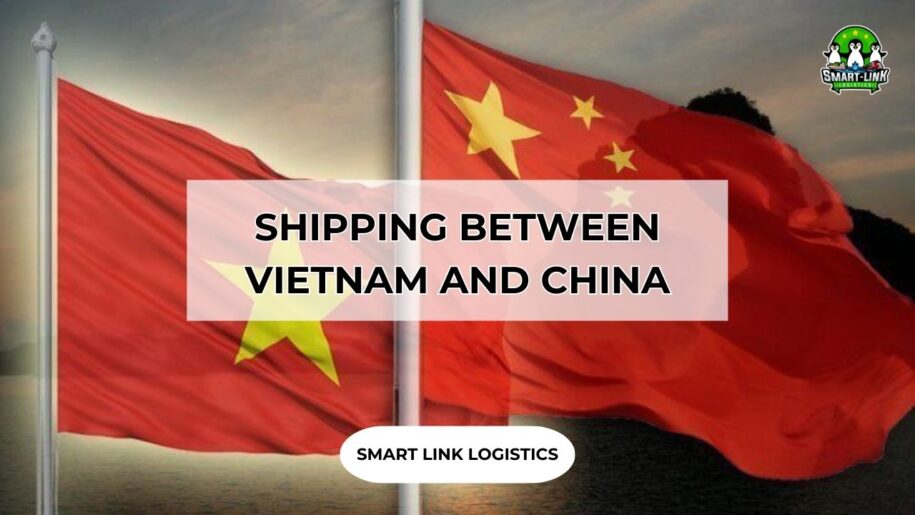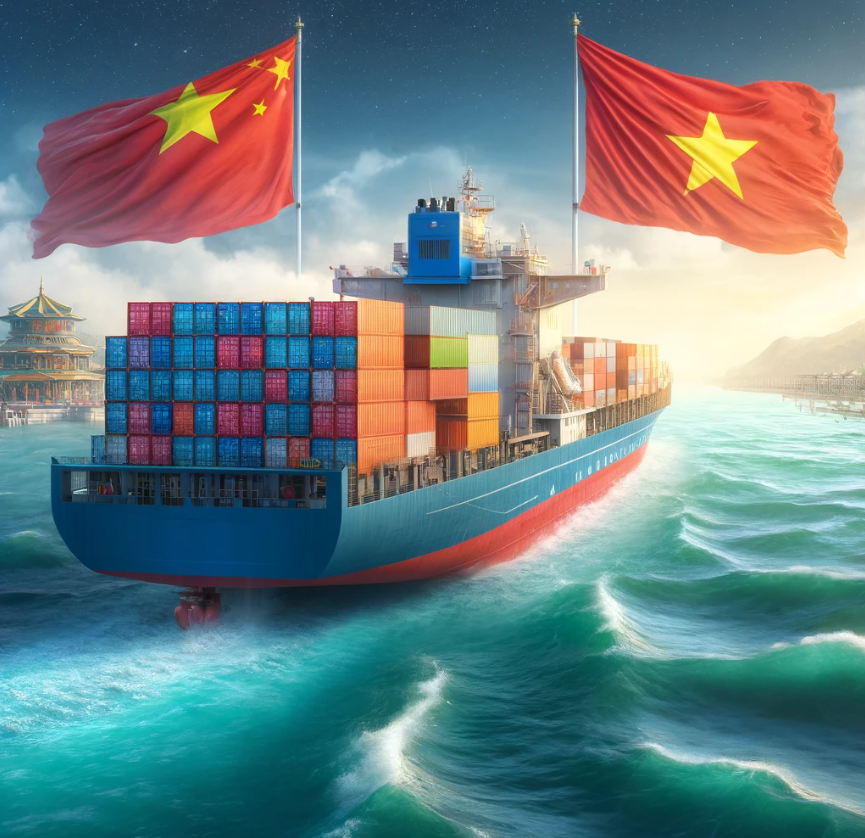
SHIPPING BETWEEN VIETNAM AND CHINA
Vietnam and China are two of the largest markets globally, with Vietnam experiencing growth that could rival China’s success in certain sectors. For businesses operating between these two countries, understanding the logistics and processes of shipping is crucial. Let’s find out the shipping between Vietnam and China!
1. Sea freight shipping between Vietnam and China

Sea freight is one of the most common methods for transporting goods due to its cost-effectiveness and reliability. In 2019, over 35% of Vietnam’s imports originated from China, while 18% of Vietnam’s exports were destined for China.
2. Major ports in China
China, a significant shipping and industrial nation in Eastern Asia, is a manufacturing powerhouse and financial center, with key cities like Shanghai, Hong Kong, Beijing, and Shenzhen hosting global banks and companies. Its ports play a crucial role in facilitating trade between China and Vietnam.
Port of Ningbo
The Port of Ningbo, a large port resulting from the merger of Ningbo and Zhoushan, handled over 1.5 billion tons of goods in 2019. Located in Zhejiang province, it primarily services cargo, container ships, tankers, bulk carriers, and oil/chemical tankers.
Port of Shanghai
As the busiest port in the world by cargo tonnage, the Port of Shanghai includes both a deep-sea port and a river port. In 2019, it handled 1.3 billion tons of goods and 36.54 million containers. Situated at the Yangtze River’s mouth, it is central to China’s extensive coastline.
Port of Tangshan
The Port of Tangshan, located 150 km from Beijing on the Bohai Sea, connects 39 inland ports and over 190 ports in 70+ nations. It handled 820 million tonnes of goods in 2019 and is the fifth-largest port globally, critical for Hebei province.
Port of Dalian
Situated at the southern tip of the Liaodong Peninsula, the Port of Dalian is strategically important, operating year-round with deep-water, ice-free conditions. It is Northeast China’s largest multi-purpose port, handling 520 million tonnes of goods in 2019.
3. Consolidation (LCL)
Less-than-container load (LCL) shipping is used when a company does not have enough freight to fill an entire container. Typical container sizes include:
- 20 feet with a capacity of 33 CBM
- 40 feet with a capacity of 67 CBM
- 40 feet high cube with a capacity of 76 CBM
LCL is typically for shipments less than 13/14 CBM. If exceeding this, using a full container (FCL) might be more cost-effective, even if partially filled.
Advantages of LCL
- Cost-effective for shipping smaller volumes.
- Freight costs are based on cargo volume rather than a flat rate.
- Reduced need for inventory space due to frequent smaller shipments.
- Flexibility and faster options during peak shipping times.
Disadvantages of LCL
- Higher cost per cubic meter compared to FCL.
- Deconsolidation at the destination can be expensive.
- Longer overall shipment time due to loading and unloading processes.
- Potential delays from customs issues with some LCL items.
4. Full Container Load (FCL)
FCL shipping is the cheapest option for transporting goods between China and Vietnam, beneficial for larger shipments.
Advantages of FCL
- Cost-effective for volumes over 15 CBM.
- Higher security as the container remains sealed throughout the journey.
- Easier tracking with real-time updates.
Disadvantages of FCL
- Slower transport method, not suitable for companies needing fast delivery.
- Not ideal for shipments under 14-15 CBM.
Understanding these shipping methods and their implications helps businesses optimize their logistics, ensuring cost-efficiency and reliability in their supply chain operations between Vietnam and China.
In summary, understanding the intricacies of shipping between Vietnam and China is essential for businesses aiming to optimize their logistics operations. Whether utilizing LCL for smaller shipments or FCL for larger volumes, the choice of shipping method impacts cost, security, and efficiency. With major Chinese ports playing a crucial role in this process, companies can leverage these insights to enhance their supply chain management and maintain a competitive edge in the rapidly growing markets of Vietnam and China.
Hotline: + 84 903 354 157 to know more about our services

If you require assistance with international import and export of goods, please contact our team at Smartlink Logistics. We are available to provide you with professional guidance on our services and the necessary customs procedures.
SMART LINK: BEST SERVICE BEST YOU


































